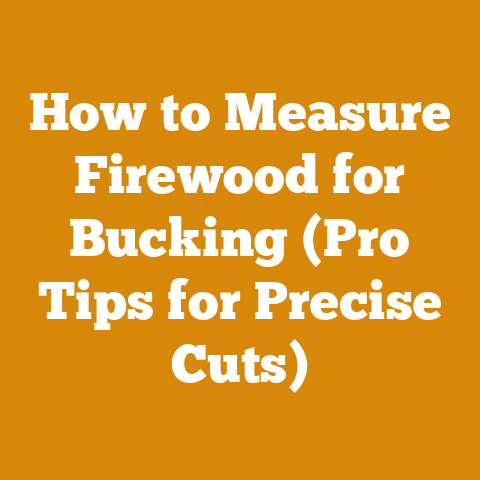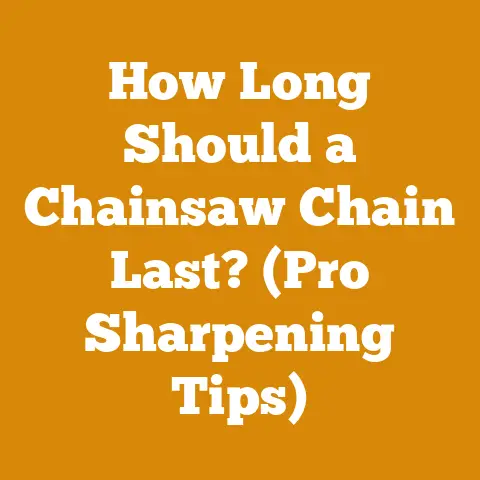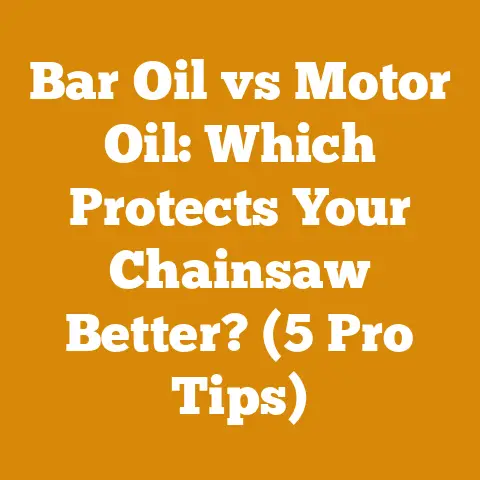Are Battery Powered Weed Eaters Any Good? (Pro Tips for Efficient Trimming)
The Future is Cordless: Are Battery-Powered Weed Eaters Any Good?
(Pro Tips for Efficient Trimming)
The crisp scent of freshly cut grass.
The satisfying hum of a well-tuned engine.
For years, these have been the hallmarks of lawn care.
But times, they are a-changin’.
As someone who’s spent countless hours wrestling with gas-powered equipment, from roaring chainsaws to temperamental weed eaters, I’ve seen firsthand the evolution towards battery-powered alternatives.
And believe me, the change is significant.
We’re not just talking about a slight improvement; we’re talking about a potential paradigm shift.
The global power tools market, including cordless outdoor power equipment like weed eaters, is projected to reach a staggering $42 billion by 2027.
That’s not just hype; it’s a clear indication that battery technology is rapidly catching up, and in many ways, surpassing its gas-powered predecessors.
Understanding the Weed Eater Landscape: Gas vs. Battery
Before we jump into the specifics of battery-powered weed eaters, let’s establish a baseline understanding of the traditional gas-powered models.
Gas-Powered Weed Eaters: The Old Guard
For decades, gas-powered weed eaters have been the workhorses of lawn care.
Their key advantages include:
- Power: Gas engines generally offer more raw power, making them suitable for tackling thick, overgrown vegetation.
- Run Time: Refueling is quick and easy, allowing for extended use without waiting for a battery to charge.
- Availability: Widely available at most hardware stores and outdoor equipment retailers.
However, gas-powered weed eaters also come with significant drawbacks:
- Noise: They are notoriously loud, often requiring hearing protection.
The average gas weed eater produces between 90 and 110 decibels, potentially leading to hearing damage with prolonged exposure. - Emissions: Gas engines produce harmful emissions, contributing to air pollution.
Studies have shown that small gas engines can contribute significantly to urban air pollution, sometimes even more than cars. - Maintenance: They require regular maintenance, including oil changes, spark plug replacements, and carburetor adjustments.
- Weight: Gas-powered models tend to be heavier than their battery-powered counterparts, leading to fatigue during extended use.
- Starting Issues: Anyone who’s ever spent ten minutes yanking on a pull cord knows the frustration of a stubborn gas engine.
Battery-Powered Weed Eaters: The Rising Star
Battery-powered weed eaters have emerged as a viable alternative, offering several advantages:
- Quiet Operation: Significantly quieter than gas-powered models, often operating at around 70-80 decibels.
- Zero Emissions: Battery-powered tools produce no direct emissions, making them a more environmentally friendly choice.
- Low Maintenance: Minimal maintenance required, with no need for oil changes or spark plug replacements.
- Lightweight: Generally lighter than gas-powered models, reducing fatigue during use.
- Easy Starting: Push-button start for instant operation.
Of course, battery-powered weed eaters also have their limitations:
- Power: Historically, battery-powered models lacked the power of gas engines, but this gap is closing rapidly.
- Run Time: Run time is limited by battery capacity and can vary depending on the model and the thickness of the vegetation being trimmed.
- Initial Cost: Battery-powered models can sometimes have a higher initial cost than comparable gas-powered models.
- Battery Life: Batteries have a finite lifespan and will eventually need to be replaced.
Evaluating Battery-Powered Weed Eaters: What to Look For
Now that we’ve covered the basics, let’s dive into the key factors to consider when evaluating battery-powered weed eaters.
Voltage and Amp-Hours: Understanding Battery Power
The voltage (V) and amp-hours (Ah) of a battery determine its power and run time.
- Voltage: Indicates the power of the battery.
Higher voltage generally translates to more cutting power.
Common voltages for weed eaters range from 18V to 80V. - Amp-Hours: Indicates the battery’s capacity.
Higher amp-hours translate to longer run time.
Common amp-hour ratings range from 2Ah to 5Ah or higher.
Pro Tip: Look for models with higher voltage and amp-hour ratings for optimal performance and run time.
A 40V 4Ah battery will generally outperform an 18V 2Ah battery.
Motor Type: Brushed vs. Brushless
The motor type also plays a significant role in performance and efficiency.
- Brushed Motors: Older technology that uses brushes to deliver power to the motor.
They are less efficient and tend to wear out faster. - Brushless Motors: More advanced technology that uses electronic controllers to deliver power to the motor.
They are more efficient, more powerful, and have a longer lifespan.
Pro Tip: Always opt for a weed eater with a brushless motor for improved performance and longevity.
Cutting Swath: Width Matters
The cutting swath refers to the width of the area that the weed eater can trim in a single pass.
A wider cutting swath allows you to cover more ground quickly.
Common cutting swath widths range from 10 inches to 16 inches.
Pro Tip: Consider the size of your lawn and the type of trimming you’ll be doing when choosing a cutting swath width.
A wider swath is ideal for large, open areas, while a narrower swath is better for trimming around obstacles.
Line Feed Mechanism: Auto-Feed vs. Bump-Feed vs. Fixed Line
The line feed mechanism determines how the cutting line is advanced as it wears down.
- Auto-Feed: Automatically advances the line as needed.
This is convenient but can sometimes lead to excessive line usage. - Bump-Feed: Advances the line by tapping the trimmer head on the ground.
This provides more control over line usage but requires more effort. - Fixed Line: Uses pre-cut lengths of line that are inserted into the trimmer head.
This is simple and reliable but requires manually replacing the line when it breaks.
Pro Tip: I personally prefer bump-feed mechanisms because they offer a good balance of convenience and control.
However, auto-feed can be a good option for those who prioritize ease of use.
Weight and Ergonomics: Comfort is Key
The weight and ergonomics of a weed eater can significantly impact your comfort and fatigue during use.
Look for models that are lightweight and well-balanced, with adjustable handles and shoulder straps.
Pro Tip: Try out different models in person to see which one feels most comfortable in your hands.
Consider the weight distribution and how easily you can maneuver the tool.
Features and Attachments: Versatility is a Plus
Some battery-powered weed eaters come with additional features and attachments that can enhance their versatility.
These may include:
- Edging Function: Allows you to rotate the trimmer head to create clean, defined edges along sidewalks and driveways.
- Variable Speed Control: Allows you to adjust the cutting speed to match the type of vegetation being trimmed.
- Attachment Capability: Allows you to attach other tools, such as hedge trimmers or pole saws, to the same power head.
Pro Tip: Consider whether you need any of these additional features and attachments before making your purchase.
If you have a lot of edging to do, an edging function can be a valuable time-saver.
My Top Battery-Powered Weed Eater Recommendations
Based on my experience and research, here are a few of my top recommendations for battery-powered weed eaters:
- EGO Power+ 56V String Trimmer: This model offers excellent power and run time, thanks to its 56V battery and brushless motor.
It also features a bump-feed line advance and a variable speed trigger. - DeWalt 20V MAX XR Brushless String Trimmer: This model is a great option for those who already own other DeWalt 20V MAX tools.
It’s lightweight, powerful, and features a bump-feed line advance. - Milwaukee M18 FUEL String Trimmer: This model is a top-of-the-line option for professionals and serious homeowners.
It offers exceptional power and run time, thanks to its M18 FUEL technology.
It also features a quick-adjust handle and a bump-feed line advance. - Ryobi 40V Brushless String Trimmer: This model offers a good balance of performance and affordability.
It’s lightweight, easy to use, and features an auto-feed line advance. - Greenworks Pro 80V String Trimmer: This model is a powerful option for tackling thick, overgrown vegetation.
It features an 80V battery and a brushless motor, providing gas-like performance.
Pro Tips for Efficient Trimming with Battery-Powered Weed Eaters
Now that you’ve chosen the right battery-powered weed eater, here are some pro tips to help you get the most out of it:
- Charge Your Batteries Fully: Always fully charge your batteries before use to ensure optimal performance and run time.
Consider investing in a second battery to avoid downtime while one is charging. - Use the Right Cutting Line: Use the recommended cutting line for your weed eater model.
Using the wrong line can reduce performance and damage the trimmer head. - Trim in Overlapping Passes: Trim in overlapping passes to ensure that you’re cutting all the vegetation evenly.
- Adjust the Cutting Speed: Adjust the cutting speed to match the type of vegetation being trimmed.
Use a lower speed for delicate plants and a higher speed for thick weeds. - Maintain a Proper Cutting Angle: Hold the weed eater at a slight angle to the ground to prevent scalping the lawn.
- Protect Yourself: Wear safety glasses and hearing protection when operating a weed eater.
Long pants and closed-toe shoes are also recommended. - Clean Your Weed Eater Regularly: Clean your weed eater after each use to remove debris and prevent clogs.
- Store Your Batteries Properly: Store your batteries in a cool, dry place when not in use.
Avoid exposing them to extreme temperatures. - Sharpen Your Cutting Line: Keep your cutting line sharp for optimal performance.
You can sharpen the line using a file or a specialized line sharpener. - Practice Proper Trimming Techniques: Learn the proper trimming techniques for different types of vegetation.
For example, you may need to use a different technique for edging than for trimming around trees.
The Future of Lawn Care: Embracing Battery Power
The transition from gas-powered to battery-powered outdoor equipment is not just a trend; it’s a fundamental shift in the way we approach lawn care.
As battery technology continues to improve, battery-powered weed eaters will only become more powerful, more efficient, and more affordable.
I’ve seen firsthand the benefits of making the switch.
The reduced noise, zero emissions, and ease of use are all compelling reasons to consider a battery-powered weed eater.
And while the initial cost may be higher than a comparable gas-powered model, the long-term savings in maintenance and fuel costs can more than offset the difference.
Case Studies: Battery Power in Action
Let me share a couple of quick stories to illustrate the real-world impact of battery-powered weed eaters.
Case Study 1: The Community Garden
A local community garden switched from gas-powered to battery-powered weed eaters.
The biggest benefit?
No more fumes bothering the gardeners and nearby residents!
Plus, the quieter operation meant they could work earlier in the morning without disturbing the neighborhood.
The garden manager reported a significant decrease in maintenance time and costs, and the volunteers loved how easy the battery-powered models were to start and use.
Case Study 2: The Small Landscaping Business
A small landscaping business decided to test battery-powered equipment to reduce their environmental footprint and potentially lower operating costs.
While they initially had some concerns about power and run time, they were pleasantly surprised.
The battery-powered weed eaters were able to handle most of their trimming tasks, and the reduced fuel costs and maintenance more than made up for the slightly higher initial investment.
They also found that the quieter operation was a selling point for some of their clients.
Costs, Budgeting, and Resource Management
Let’s talk about the financial side of things.
Here’s a breakdown of the costs associated with battery-powered weed eaters:
- Initial Purchase Price: This can range from $100 to $500 or more, depending on the brand, voltage, and features.
- Battery Replacement: Batteries typically last for 3-5 years, depending on usage and storage conditions.
Replacement batteries can cost anywhere from $50 to $200 or more. - Charging Costs: The cost of electricity to charge the batteries is relatively low, typically a few cents per charge.
- Maintenance Costs: Battery-powered weed eaters require minimal maintenance, so these costs are generally very low.
- Line Replacement: The cost of replacing the cutting line is similar to that of gas-powered models.
Budgeting Tips:
- Consider a Combo Kit: If you need other lawn care tools, such as a lawnmower or hedge trimmer, consider purchasing a combo kit that includes multiple tools and batteries.
This can often save you money compared to buying each tool separately. - Look for Sales and Discounts: Keep an eye out for sales and discounts on battery-powered weed eaters and batteries.
Many retailers offer seasonal promotions and clearance sales. - Buy Refurbished: Consider buying a refurbished weed eater or battery to save money.
Refurbished products are typically inspected and repaired by the manufacturer and come with a warranty.
Resource Management Tips:
- Extend Battery Life: Follow the manufacturer’s recommendations for charging and storing your batteries to maximize their lifespan.
- Recycle Batteries: Dispose of used batteries properly by recycling them at a local recycling center.
- Conserve Cutting Line: Use the proper trimming techniques to minimize line breakage and waste.
Troubleshooting and Common Pitfalls
Even with the best equipment and techniques, you may encounter some issues while using a battery-powered weed eater.
Here are some common problems and how to troubleshoot them:
- Weed Eater Won’t Start: Check the battery charge level and make sure the battery is properly installed.
Also, check the safety switch and make sure it’s in the correct position. - Weed Eater Lacks Power: Make sure the battery is fully charged and that you’re using the correct cutting line.
Also, check the motor for any signs of damage or wear. - Cutting Line Breaks Frequently: Use the recommended cutting line for your weed eater model and avoid trimming near hard surfaces, such as rocks or concrete.
- Line Feed Mechanism Malfunctions: Clean the trimmer head and check for any obstructions.
Also, make sure the line is properly wound on the spool. - Battery Won’t Charge: Check the charger and make sure it’s properly connected to the battery.
Also, check the battery for any signs of damage or wear.
Common Pitfalls to Avoid:
- Overcharging Batteries: Avoid leaving batteries on the charger for extended periods of time after they’re fully charged.
- Storing Batteries in Extreme Temperatures: Avoid storing batteries in direct sunlight or in extremely cold temperatures.
- Using the Wrong Cutting Line: Always use the recommended cutting line for your weed eater model.
- Neglecting Maintenance: Clean and maintain your weed eater regularly to prevent problems.
- Ignoring Safety Precautions: Always wear safety glasses and hearing protection when operating a weed eater.
Next Steps and Additional Resources
So, where do you go from here?
- Research and Compare Models: Use the information in this guide to research and compare different battery-powered weed eater models.
- Read Reviews: Read online reviews from other users to get a better sense of the pros and cons of different models.
- Visit a Local Retailer: Visit a local hardware store or outdoor equipment retailer to see and try out different models in person.
- Make a Purchase: Choose a battery-powered weed eater that meets your needs and budget and make a purchase.
- Start Trimming! Follow the pro tips in this guide to get the most out of your new weed eater.
Here are some additional resources that you may find helpful:
- Online Retailers: Amazon, Home Depot, Lowe’s, etc.
- Manufacturer Websites: EGO Power+, DeWalt, Milwaukee, Ryobi, Greenworks, etc.
- Lawn Care Forums and Blogs: Search online for lawn care forums and blogs to get tips and advice from other homeowners.
- Local Recycling Centers: Find a local recycling center to dispose of used batteries properly.
Final Thoughts: A Cordless Future is Within Reach
Making the switch to battery-powered lawn care equipment can be a game-changer.
While gas-powered tools still hold their own in certain situations, the advantages of battery-powered options are becoming increasingly clear.
From reduced noise and emissions to lower maintenance and ease of use, battery-powered weed eaters offer a compelling alternative for homeowners and professionals alike.
Remember, the best choice for you will depend on your individual needs and preferences.
But with the right research and planning, you can find a battery-powered weed eater that will help you keep your lawn looking its best without breaking the bank or harming the environment.
So, are battery-powered weed eaters any good?
My answer is a resounding yes.
The technology has matured, the power is there, and the benefits are undeniable.
Embrace the future of lawn care, and you might just find yourself enjoying the process a whole lot more.






